Go Beyond the Gag Reel: Supernatural Season Two Special Features
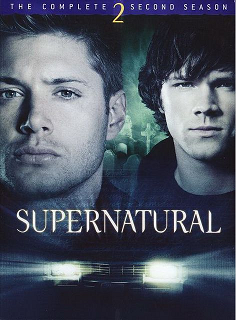 In the last installment of “Go Beyond the Gag Reel,” we examined the special features of season one. It covered everything from the deleted scenes to the commentaries to the special additions only found on the Blu Ray set—in particular the Devil’s Road Map and the Paley Fest Panel. It gave us a chance to see a glimpse behind the scenes and dig a little deeper into the writing, acting, and overall production that goes into making Supernatural each week. These special features also give us a chance to learn more about each person involved with the show and what their roles exactly are. Season two’s special features continue that tradition, digging deep into various aspects that shaped that season and the show as a whole.
In the last installment of “Go Beyond the Gag Reel,” we examined the special features of season one. It covered everything from the deleted scenes to the commentaries to the special additions only found on the Blu Ray set—in particular the Devil’s Road Map and the Paley Fest Panel. It gave us a chance to see a glimpse behind the scenes and dig a little deeper into the writing, acting, and overall production that goes into making Supernatural each week. These special features also give us a chance to learn more about each person involved with the show and what their roles exactly are. Season two’s special features continue that tradition, digging deep into various aspects that shaped that season and the show as a whole.
Let’s examine the special features. Let’s “Go Beyond the Gag Reel,” shall we?
The first extras I started to watch were the deleted scenes. Again, they are those short moments that just didn’t make the final episode cuts. Some were completely brand new scenes while others were elaborations on ones we’ve seen in the full episode. A few of them were added visuals that were later stripped in the final episode. Watching these moments can help us to see another layer that might enhance the current 42 minute episode as we know it.
The episodes that garnered deleted scenes for season two were “In My Time of Dying,” “Bloodlust,” “The Usual Suspects,” and “Hunted.”
“In My Time of Dying” had two extra scenes that don’t really change the story, but do add a couple new elements. One is of a bloody man on a gurney, begging not to die. It’s fulfills that gory factor that Kripke seems to enjoy. The other played with humor—in particular Dean taking advantage of his being invisible to potentially spy on a female patient.

“The Usual Suspects,” and “Hunted” had new scenes that added new layers to their episode—either in humor or to expand on the overall story. We see a discussion about DanaShulps brought up between the detectives. Diana starts to ask her partner, Pete, if he had ever seen the word only to drop it. I felt it showed her caution about what was happening to her with the strange occurrences—and knowing the ending it makes sense why this was cut because she doesn’t suspect Pete until she sees the necklace with Sam—on his other murder victim. He mentions Ashland, the very place Sam and Diana find the body, after all. “Hunted,” on the other hand, focused on humor. It gave us a moment to watch Ash in his element, trying to pick up a woman visiting the Roadhouse only to be shot down. It was great to see Chad Lindberg have fun with the little moment, and I couldn’t help but giggle.
Photos: Credited to Raloria
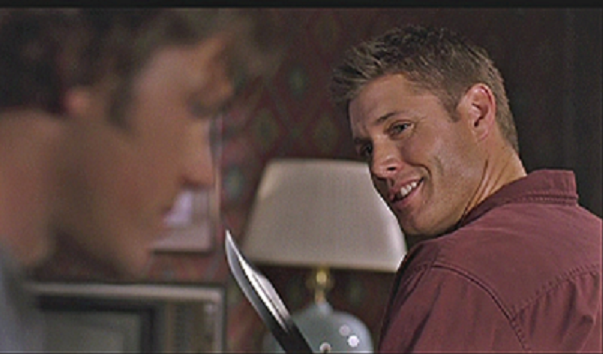

The best deleted scene for season two, though, has to be from “Bloodlust.” We’re given another glimpse of the brothers discussing the moral debate of the episode—do they hunt all monsters or only the monsters that kill humans? Do they hunt monsters or do they hunt evil? It was a much calmer dialog between the two brothers as opposed to the shouting match we see much later in the episode. They know that they are after vampires—and they haven’t met Gordon just yet—but Sam’s trying to figure out why there haven’t been more victims or why they’ve managed to put down roots in this town. Dean, on the other hand, doesn’t care why they’re there. He’s just ready to hunt. It gave us another perspective on their two point of views in a totally different atmosphere that makes us pause and consider each character’s stances without the heightened emotions. This is a much more philosophical moment.

The next extra that I watched was an unusual one to add onto the season two set: Jared’s original screen test. I’m not sure why this one wasn’t on the season one set, but here it is now. This is the very moment we see Jared Padalecki come in to read for the part of Sam and how he’d present the character. There’s two runs of approximately the same scene—an expansion on a moment we all know from the “Pilot.” They have Jared run the lines about the things in the dark and their dad giving him a .45 and another moment that never made the cut: questioning if they should just ditch the job surrounding the Woman in White to run after their father.
Throughout the extras in season one and two, Kripke referred to the idea that both actors had to be homeruns, and seeing Jared’s screen test shows us that he was certainly that and more. He captured Sam quickly and brought the younger Winchester to life with the brief moments we’re afforded to see here. It’s what makes this extra so special. We watch Jared flip from being himself, questioning where they’re going to start their read in the script to pulling us into the moment and seeing Sam come to full life by the end of the scene. It’s a true testament to his skill.

Even more, we get to see him read these scenes once with his trademark beanie on and the next with his hair free. It adds to his performance and gives us a chance to see him truly transform into Sam. If you haven’t taken the time to watch this particular extra, do it. The only downside to this one is it makes you want to see Jensen’s screen test, which unfortunately doesn’t make the box set.
The next extra explored the special effects with Ivan Hayden. I’m always impressed with the special effects presented each week on Supernatural, and now that I’m watching the series on Blu Ray I find myself even more impressed than ever before. Hayden explains to us about how they use these effects on the show to enhance the story. He was clear that the special effects had to help make the story more real visually, but never to distract from the acting taking place on screen. Hayden felt that it was best used to enhance the acting—particularly done by Jared and Jensen. He spoke a lot about making these effects unique each week—and that since they do have a different creature each week, it makes it a challenge to not only keep it consistent but to keep it fresh for the viewer.

Most of all, Hayden spoke about how collaborative this show really is. He cited the example of the doctor torn apart by hell hounds in “Crossroad Blues.” The tearing apart of her legs was done by a combination of special effects done on the computers and by the make up team. The two things combined together gave us the illusion of seeing this invisible creature kill this woman and drag the soul to hell. Hayden also talked about how it felt like being a kid, getting to play with concepts such as werewolves and trying to adapt them to the Supernatural universe each week.
We all wish we could be a fly on the wall in the writers’ room, and it seems they know it, too. There’s an extra that gives us a great glimpse inside it as Eric Kripke, John Shiban, and Bob Singer discuss the process and collaboration they use to shape the episodes and seasons. We’re allowed to see the giant white boards, covered in “Beautiful Mind” script—Kripke’s term for the crunched down scrawl outlining an episode or season arc. It was really neat to see, and if given the time, I think we all would have spent hours looking over it all, taking it all in. It’s amazing how all of that scrawl becomes the show we watch each week.
Photos Credited to Raloira


They showed a brief flash of the storyboards that illustrate the scripts. Kripke described them as being cool. Kripke discussed the notion that they have to make each concept unique and look for that shocking twist. He admitted that season two was a much more philosophical season compared to season one—but did that deliberately to avoid the show from going stale. They still had the concept of the Winchester brothers driving in and out of a little horror movie each week, but they couldn’t simply stand on that and keep the show feeling fresh.
Robert Singer mentioned that this show is unlike so many others. Most shows have a seven day prep, but he says that is “impossible” for Supernatural. It has to be at least eight days if they have any hopes of getting an episode from start to finish in the time frames given to them. It really highlighted how much of a crunch they are in to get each episode and season together during the filming period of the year. That means the writers have just as much pressure to get a script written and prepared as much as the film crews have for making their days while filming.
Singer then talked about how they try to take each creature or monster or legend they’re dealing with and try to connect that back to the brothers and their story. Kripke elaborated, stating that “everything is family.”

The next extra narrowed the focus to the props we see used in the show every week. Christopher Cooper is the props manager for Supernatural, and he talked about how it is his job to make all the props we see become a reality to ground us in the Winchester universe. These props can range from beer bottles to guns or knives. He’s always looking for something unique and new but also trying to make the weapons fit the lore that they’re dealing with each week.
Cooper showed both of Sam and Dean’s guns, explaining that they only shoot blanks. They always have a couple on hand in case one of them jams. For the safety of the actors, when one is used to hit another character, that gun is traded out for a rubber replica. Cooper explained that they use “blood” knives to simulate the cuts we see used by the Winchesters—typically in a test to see if they’re human—and that it taps into a reservoir that looks like a cut while not cutting the actor for real. He said that he enjoyed working with Jared and Jensen because they both are so willing to do just about anything and use about any prop they need to in order to tell the story.
There were three commentaries for season two: “In My Time of Dying,” “What Is and What Should Never Be,” and “All Hell Breaks Loose I.” The commentaries are still my favorite aspects of the extras as we get to hear little details and insights that we might not get otherwise or in shorter extras. We’re afforded a chance to hear from various individuals discussing not only the episode they’re commentating on, but also on the show as a whole and what it means to them to be working on it.

The first commentary, “In My Time of Dying,” has to be one of my favorite commentaries possibly ever. Jared, Jensen, Kim Manners, and Cyrus Yavneh all discuss the season two opener and provide deep insights. There’s a ton of behind the scenes secrets revealed that only enhance the final product. Jared talks about how hard it was to pull back the hammer on the Colt—especially with one hand. He also talked about how his eye was hurt due to the prosthetics melting from the hot sun—which led to the eyewash and patch. He also revealed a secret about his eye lid prosthetics being put on and blended so it’s impossible to tell where his actual skin begins and the prosthetic begins.
Kim Manners and Jensen discussed how the shots were done with the Dean in the hospital bed and Dean standing as a spirit. There was a double that had to have a mask molded from Jensen’s face so that they could have the two in the scene at the same time—along with CGI work that filled in gaps. Jensen found the whole experience weird. The double had to be led around as he was blind with the mask. This behind the scenes moment revealed just how difficult it is to film an episode like this. It also made me wish we could see footage from start to finish!

The first scene that was shot for season two was performed by Jared Padalecki and Jim Beaver as Sam and Bobby discuss what to do with the Impala. Jared and Kim Manners talked about how that came about in the shooting schedule. It was another moment that revealed just how time doesn’t flow the way we eventually see it as a completed episode—rather it follows the filming. That was corroborated by Jared and Jensen talking about the succession of scenes shot with Jeffrey Dean Morgan—some of them sprinkled at various intervals in the episode and emotional beats of the story.
The length of time it took to capture Dean walking through the hospital took about four hours according to Manners—and they were chided by Kripke for having spirit Dean opening doors—only adding more time to the shooting. He also talked about how the reaper we see Dean wrestle with happened to be a light-bulb on a pole and then inserted after by the special effects team. There’s a goof pointed out as Jensen bumps into the nurse and we see her sleeve move from the touch—despite the fact that Dean isn’t supposed to be physically felt or seen.
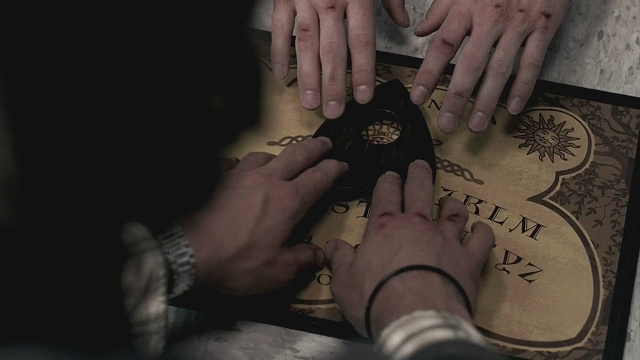
Cyrus Yavneh talked about the Ouija board, the journals, and all the other things we see. He said that twenty people had to check and budget for each thing shown on screen. The Ouija board was their biggest challenge as they had to avoid any copyrighted imagery. He discussed that a prop designer had to make the entire board from scratch, making it all in house for them to use on the actual show. It really made that particular scene all the more special, knowing that this item was unique to Supernatural rather than a simple board brought in from a store.
Jared and Jensen discussed being on set for their birthdays—and Jared admitted that he had spent his watching Jeffery Dean Morgan and Fred Lehne filming their scenes. It really captured that commitment that both have to the show. It isn’t just a job or their career—they are clearly invested in it on many levels. That really impressed me.
One of the most touching moments was hearing Manners talk about how emotional he got while directing Jared. Watching Sam talk at Dean’s bedside after being unable to figure out how to stop the reaper really touched him. Jensen backed that up by mentioning that he loves that the crew will read the scripts and are that invested in the show, too. It’s not just the actors, writers, or directors that are touched by the show. It’s the whole team that makes it.

The next commentary was done by Eric Kripke for “What Is and What Should Never Be.” He was excited for this episode since it was to be his directorial debut and so he spent a long time trying to make sure his episode was one he really wanted. He rejected several story pitches until the concept of the alternate reality emerged. He cited Buffy the Vampire Slayer and their own alternate reality episode showing her in the mental institution and wanted to do something similar for Supernatural. Kripke saw it as a chance to see what Dean would be like be without hunting. He originally imagined that Dean would be a loser and a drifter but was talked down by “cooler heads” that convinced him that the alternate reality should be a paradise fantasy. The one flaw in that fantasy that tarnishes it has to be that Sam and Dean don’t get along.

Kripke really liked doing this episode from a story perspective because it gave us a chance to finally see Mary as a character rather than the glimpses we’ve seen in the “Pilot” and “Home.” It really fleshed her out and made the story surrounding her and why the brothers do what they do become all the more real. It also allowed for some great acting. Kripke stated, as a director, that he gave Jensen a note that Dean’s interactions with his mother will make him that little boy again and we saw him point out how Jensen did that subtly with gestures and touches. We see it in how Jensen closes his eyes and leans into her touch for instance.
This was also Kripke’s first chance to see what the filming conditions were like up in Vancouver. In the past, he’d send notes about what he’d want for the episode only to get a note from Kim Manners that said it wouldn’t work. Now he had a chance to see why. He discussed how hard it is to direct and how fast and stressful it is. In many ways, hearing about his first time directing gave me a glimpse at how much fun and how much work it’d take to direct a single episode of an hour long drama—something I know I don’t always consider when I watch a show. Seeing this gives a fresh perspective for Supernatural and for all the shows I watch and how much time and work goes in for directors and everyone involved. Kripke discussed how the time crunch really affected him—being a perfectionist—there’s not a lot of time to get things done perfectly. It has to be shot and then move on.
He gave great insights into how some of the camera shots we see are produced. They use two cameras, one on Jared and one on Jensen so they can then combine the two angles together to make the show flow and get them saying their lines from both sides. It’s something I wouldn’t have considered, but that really made me think about how they go about filming. If they did it with the single camera, Kripke said it’d take his shots in a day from thirty to sixty. Having the two cameras makes sure that they can get all they need filmed in that day without having to waste time or push against an even bigger time crunch.

Along with that, he gave some insight into how hard it was to get Adrienne Palicki back for this episode. She was on Friday Night Lights at the time and they were filming their show—and therefore unwilling to let her go up for filming on Supernatural. To get her in the scene with everyone confronting Dean, they had her shoot in front of a green screen and then had that dropped in by special effects later on. It showed me just how much of a story or show can be affected by outside influences—such as casting availability.
The last commentary was on “All Hell Breaks Loose I.” Eric Kripke, Bob Singer, and Sera Gamble discussed the episode and the season in detail. The cafe we see in the beginning that Sam is abducted from is the smallest one ever—according to Singer. It’s also surrounded by a huge amount of water from a rainstorm. It’s a lot easier to see when you watch the show on Blu Ray and know where to look, but there’s a huge puddle that forms a moat around the cafe they built.

Kripke admitted that the location of Cold Oak was a second choice. He had originally considered having all the psychic children waking up in an orphanage, but the Border Town opened up, allowing them to set it in a great location. Unfortunately, the rain messed with this aspect, washing out the road on the way and making it difficult to get the filming trucks in. There was questions if they were going to manage to film there at all or not and many challenges arose due to that.
Sera Gamble described the psychic children meet up as a Supernatural version of The Breakfast Club. It took about a week for her to storyboard the entire episode and then had to get it accepted by Kripke and Singer. Kripke asked Gamble about their criticisms on her storyboards or scripts, admitting that he does a compliment sandwich while Singer gives it straight. Gamble said that she liked knowing their thoughts and where she might have to improve the story before getting things set.

Gamble went on to explain how the powers were picked for the various children. She said that Jake’s powers were chosen last. They needed a character that would stand up in a fight with Sam, giving us the believability and the danger necessary to invest in the moment. It made sense to make Jake an army man and have super strength, then.
This commentary really had a lot of deep insights and explorations with three key members of the writing team that made season two as a whole and the show that much more layered. They revealed a bit of not only how they think about the show and its characters—Gamble and Kripke enjoy writing the action sequences for instance—but how they worked and meshed together a a group in the writer’s room. While they were discussing an episode that was already finished, it was clear we were seeing a glimpse of how they talk through story ideas or plot plots or character building. It’s something that has always fascinated me, so this commentary truly did that and more.
The last extra was another Devil’s Road Map—exclusive only on the Blu Ray. It was broken into three parts: features on each episode, a local information journal, and an in-depth look at the Roadhouse.
In the features, we see a small trailer about each episode, breaking down an aspect about it. There were so many highlights in each one that made all twenty-two episodes all the more richer. Some dealt with the creature or folklore. Others dealt with the genesis of an episode. Others looked at how they fit into the overall season scheme and what they were trying to do with them. In these features, they didn’t simply talk to those involved in making the show. They added in experts from various universities discussing different elements of mythology or folklore and their relations to history and now popular culture. That fascinated me, tugging out even more layers that I’ve already sensed before and putting them into the forefront.

My highlights have to be hearing about how “Crossroad Blues” came to be. The mythology of making a demon deal had been hinted at within the show prior to this episode—in particular as John makes his deal with Azazel—but here we see them play with and adapt folklore that allowed them to open the door to more story down the road. The legend of Robert Johnson is actually a blending with another blues man and an African folklore story. In the African story, people would go to a crossroads to summon not a demon, but a deity that may grant that person something. The price in return isn’t entirely certain—be it a soul or something else. In the folklore, this being can be considered a “King of the Crossroads.” Finding this tidbit out made me really think about Crowley and his evolution after his introduction in season five. His making can be traced back in many ways to the very folklore used in “Crossroad Blues.”
In the feature on “Children Shouldn’t Play with Dead Things,” Sera Gamble discussed why the zombie was such a powerful creature for them to face in this episode. The zombie, Andrea, is a stand in for Dean. He, at this stage in the season and the show, has been rendered a zombie. He was dead and was brought back unnaturally and had to learn to cope with that aspect. It’s something that has always resonated with me when it comes to this episode, and hearing it discussed in those terms during the feature made that all the more clearer.
The feature on “Croatoan” discussed the lost colony of Roanoke and connected it to the historical record—in particular how the would be governor of the colony ended up trapped in England from 1588 to 1590 due to the threat of the Spanish Armada, eventually defeated by the English and the weather. By the time he returned, he found the colony empty and the word Croatoan carved into a tree—and the legend was born.

Another great feature was on “Playthings” and how that episode came about. Kripke’s wife had told him about a creepy doll museum that she drove past frequently and tried to convince him to do a doll episode. That didn’t interest him until she took him there and showed him the place. From there, they decided to do a doll episode that ended up really being about little girls. It really intrigued me to see how an episode concept could end up leading to a different story in the end, too.
The local information gave insights into each location that the show used in season two. Some were about urban legends of the town while others were about the state the episode took place in. My highlights have to be that Duluth is considered the most haunted city in Minnesota and that both Poe and Lovecraft had connections to Baltimore: Poe for his overall connection and a romance gone sour and Lovecraft because he used its locations in his works.

The biggest highlight, though, has to be Stull Cemetery found in Lawrence, Kansas. We know this place best in “Swan Song” as it is the place where Lucifer and Michael will have their prize fight. Looking at the lore, however, we learn that this isn’t the first visit of the Morningstar. They say that Lucifer is expected to appear at Stull twice a year and that people have gathered in the past to see if he will show up. So far there hasn’t been a verified sighting, of course, but I couldn’t help but smile when I saw this tidbit. Knowing that they do extensive research on lore, it’s intriguing that a bit of American folklore tied the Biblical lore together here.
The last part of the Devil’s Road Map had an in-depth exploration of the Roadhouse from its creation to its ultimate destruction. This extra shed a lot of light on various aspects of the show and television making in general. For instance, the Roadhouse was something the network conceived, pressing Kripke and the writing team to include. They wanted there to be a recurring location that the Winchesters could eventually develop into a potential homebase rather than being so fractured as they move from place to place.

In that atmosphere, they added Ellen and Jo, two characters that brought a new dynamic not yet seen on the show: that of the mother and daughter bond. This allowed for some expansion on the emotional landscape and exploration of other issues. Along with that, Ash was added to be a quirky and fun character. Kripke knew a genius that happens to have a mullet would be a network first!

The actual look and feel of the Roadhouse was infused with a lot of Midwest touches on purpose built from bars that Wanek knew from back home in Wisconsin. They also made sure that it was always dark inside, no matter the time, in order to fit it in better with the overall show.

When it came time towards the end of the season to make a decision on the Road House, Kripke wanted to burn it. He was frustrated with how many times they had shown it and felt it wasn’t organic in its inception so it was overstaying its welcome by that time. He didn’t want it to become something like the bars seen in Buffy the Vampire Slayer or Angel—and he didn’t feel that a permanent home base fit the Winchester story at the time. So, he eagerly prepared its demise and instructed that they burn it to the ground.
This feature really showed just how some things might be directed by the network as opposed to the writing team’s discussions and how that might affect the show on certain levels. I’ve always kinda liked the Roadhouse, but I can see where it ran into some problems during its existence and how many of those had its roots in its origins. This was a network concept that was then squeezed into the show to please them in hopes that it would gain viewers. By the end of the season, the writing team had to find away to extract it and so we saw it destroyed.
As I went “Beyond the Gag Reel” for season two, I found myself really learning even more than season one’s extras taught me. These behind the scenes stories and features really expand on the viewing experience of not just a particular scene, episode, season or Supernatural—I’m finding that it’s teaching me a lot about the nature of television itself and how the shows we watch go from that abstract pitch concept to an actual pilot or series—and how over time those that do make it to seasons evolve over time either by the network influence or by the collaborative team assembled to create it.
If you haven’t sat down to watch season two’s extras, I suggest that you do. “Go Beyond the Gag Reel” and see what insights you might discover. Some of the ones I’ve pointed out really grabbed me. You never know what might grab you as you explore.
In the next installment, we’ll explore all of season three’s extras.

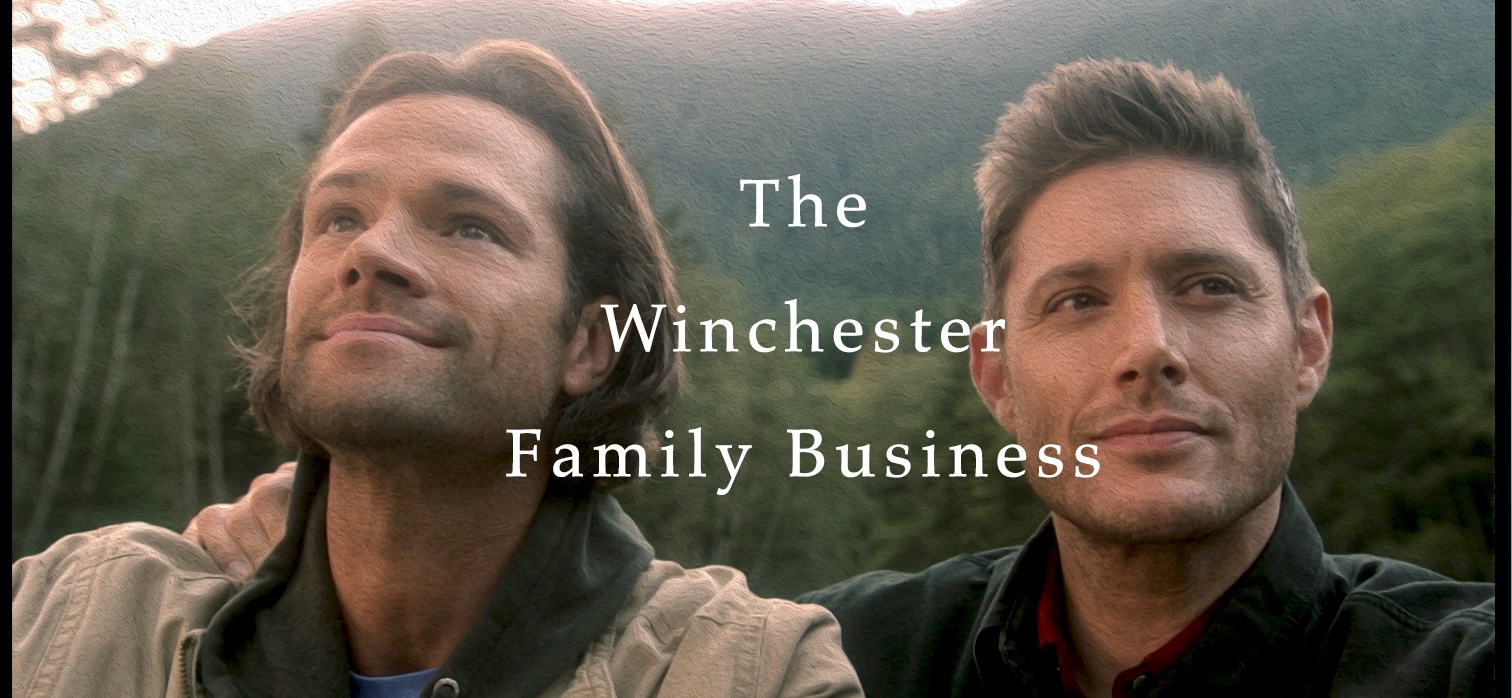

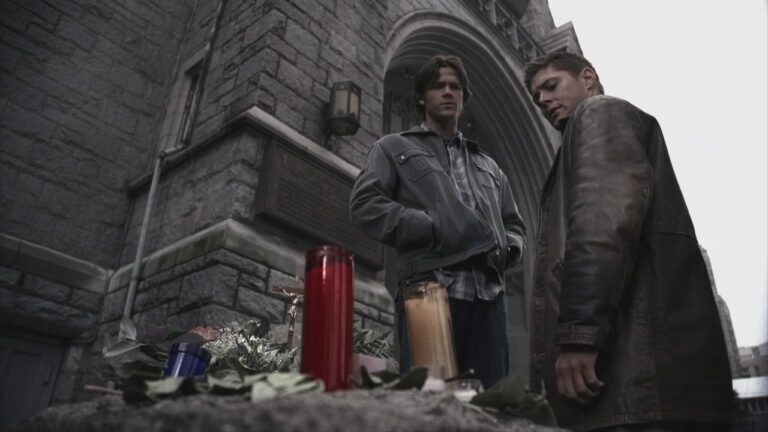
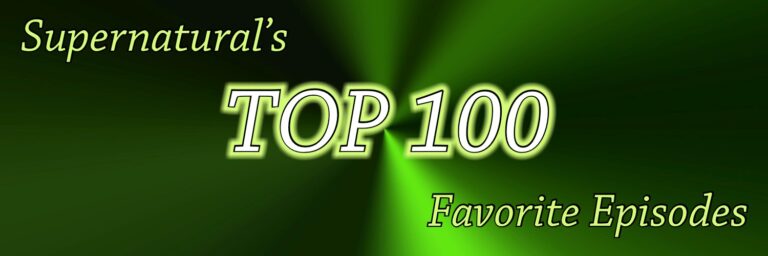
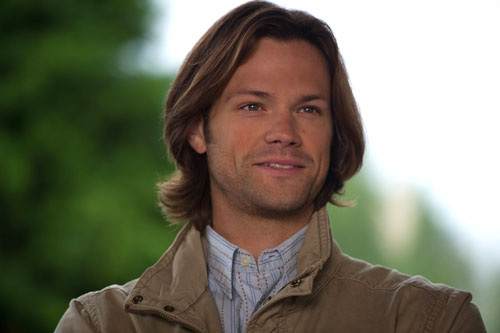
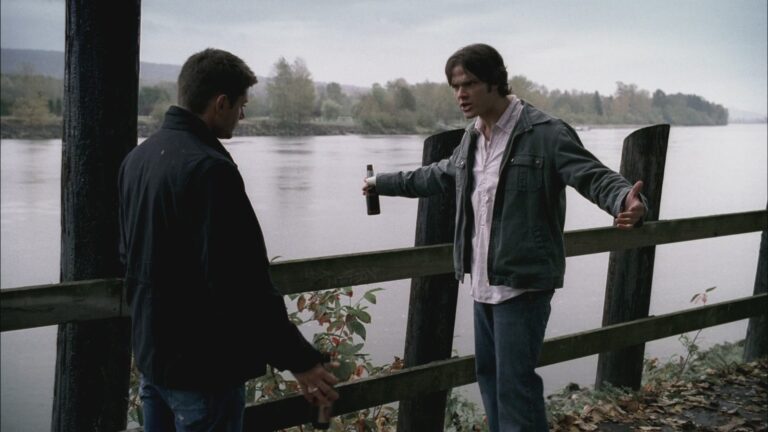
Thank you Far Away Eyes for these bts looks. Most of these looks I knew but the there were a lot I didn’t. I didn’t realize how much influence the “suits” had in shaping the seasons as far as adding characters and storylines. It is interesting that most of the ideas were scrapped and no one really missed them. Although I was glad that Jo and Ellen were added to the show. I loved Jared’s screen test. No wonder they didn’t look any further. Is there a screen test for Jensen floating around? I have never seen one. As I do my summer re-watch I always watch the episodes with the commentary. It is fun to listen to writers, directors and actors talk about the different scenes, how they were shot (most out of sequence) and how difficult it is to film this show. I am loving this series of articles so Thank you again.
Thanks for the comment.
I’m glad you’re enjoying this look at all the extras. I know I’m learning a lot just by watching them.
I was surprised that the Roadhouse was something the network insisted upon. I’ve always kinda liked it, but I also can see why it had to go, too. Knowing now that it was something that the writing team had to insert makes everything about it a bit clearer. I think it’s possible that the show would have been just fine without it, but since they had to include it I think they found a way to make it work on most levels. It really makes you think about how television is made, that’s for sure. It’s not always in the writing room where some ideas are born!
I wish we had Jensen’s screen test. It would be awesome to see him read for Dean and what scene they had him read and if it was the other side of Jared’s screen test scene or a different one all together. I also kinda wish we could see the two of them together in a screen test to see how that chemistry worked even before the Pilot.
I’m so glad you’re enjoying this series. I know I’m having fun and I look forward to digging into season 3.
Thanks again.
These are fun articles-really enjoying them. I do not have the series in Blue Ray so it was interesting to read what was not on my DVD’s. Have already watched the whole series, so now am watching the reruns on Tues on the CW. Something caught my eye when they showed Dog Day Dean episode. I know this is way out of sequence but it is still interesting-at the beginning of the episode, in the victims shop, the dog is next to a stuffed white and black dog. I swear that is the same stuffed dog that was in the episode Borrowed Time in the second season of Dark Angel. The stuffed dog was the guard dog at the junk yard. I’m glad it was kept in good shape. Just a lot of funny little trivia’s, etc in this world.
Thanks for the comment.
I’m glad you’re enjoying my little exploration of the special features. And yes, I’m surprised what’s included on the Blu Ray as opposed to the straight DVDs.
I’ll be honest. I’ve never watched Dark Angel (though its on the list!) I don’t know if that dog is from that show, but I wouldn’t be surprised if that was some insider joke. It’s very cool how they put in shout outs like that in various ways through the series.
I hope you’ll enjoy the rest of this special features series.
Thanks again.
Thanks – these are fun articles. This has inspired me to go back and rewatch all of the cut scenes, commentaries, and special features on the blu ray DVDs.